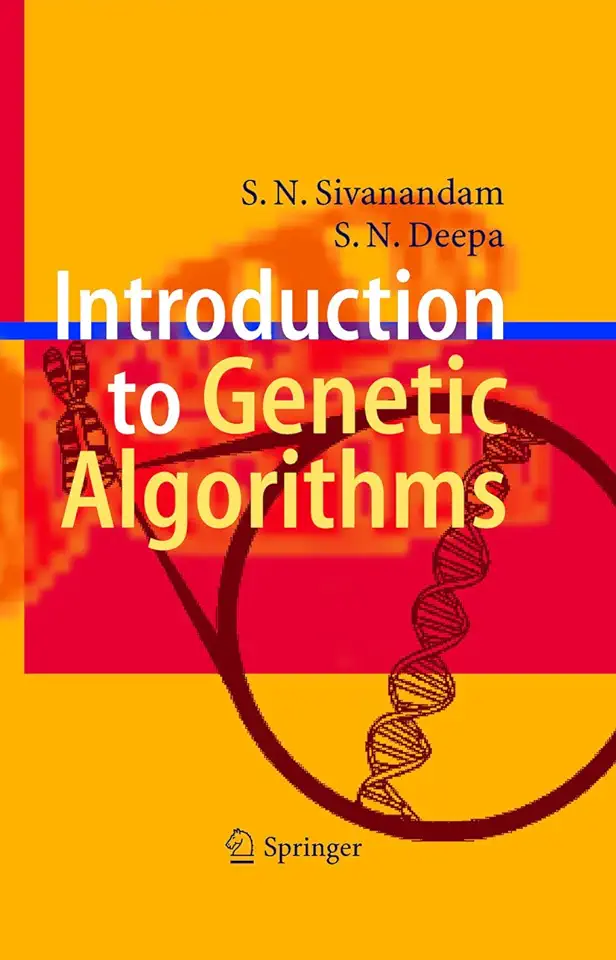
Introduction to Genetic Algorithms - S. N. Sivanandam
Introduction to Genetic Algorithms
Overview
In the ever-evolving field of computer science, genetic algorithms stand out as a powerful and versatile tool for solving complex optimization problems. Inspired by the principles of natural selection and evolution, genetic algorithms mimic the processes that drive the survival and adaptation of species in the natural world. This book, "Introduction to Genetic Algorithms" by S. N. Sivanandam, provides a comprehensive and accessible introduction to this fascinating field, empowering readers to harness the potential of genetic algorithms for a wide range of applications.
Key Features
Comprehensive Coverage: The book covers the fundamental concepts, principles, and techniques of genetic algorithms in a systematic and thorough manner, making it an ideal resource for both beginners and experienced practitioners.
Real-World Examples: To illustrate the practical applications of genetic algorithms, the book presents numerous real-world examples and case studies, demonstrating their effectiveness in solving diverse problems across various domains.
Step-by-Step Tutorials: Each chapter includes detailed step-by-step tutorials that guide readers through the process of implementing genetic algorithms, ensuring a hands-on understanding of the concepts and techniques discussed.
Advanced Topics: The book delves into advanced topics such as multi-objective optimization, constrained optimization, and parallel genetic algorithms, providing readers with a deeper understanding of the field and its potential for solving complex problems.
Benefits of Genetic Algorithms
Genetic algorithms offer a number of advantages over traditional optimization methods, making them particularly well-suited for solving certain types of problems:
Robustness: Genetic algorithms are robust and can handle complex problems with multiple variables and constraints, where traditional methods may struggle or fail.
Global Optimization: Genetic algorithms have a higher probability of finding the global optimum solution, rather than getting stuck in local optima, which is a common problem with other optimization techniques.
Parallelization: Genetic algorithms can be easily parallelized, making them suitable for implementation on high-performance computing systems and distributed computing environments.
Adaptability: Genetic algorithms can adapt to changing environments and problem dynamics, making them suitable for solving problems where the objective function or constraints may change over time.
Applications of Genetic Algorithms
Genetic algorithms have been successfully applied to a wide range of problems across various domains, including:
Engineering Design: Optimization of engineering designs, such as aircraft wings, bridges, and mechanical components, for improved performance and efficiency.
Financial Trading: Development of trading strategies and portfolio optimization for maximizing returns and minimizing risks in financial markets.
Scheduling and Logistics: Optimization of scheduling problems, such as job shop scheduling, vehicle routing, and supply chain management, for improved efficiency and reduced costs.
Machine Learning: Feature selection, hyperparameter tuning, and model optimization in machine learning algorithms for enhanced performance and accuracy.
Artificial Intelligence: Development of intelligent systems, such as autonomous vehicles, robotics, and natural language processing, by optimizing various parameters and decision-making processes.
Conclusion
"Introduction to Genetic Algorithms" by S. N. Sivanandam is an essential resource for anyone interested in exploring the power of genetic algorithms. With its comprehensive coverage, real-world examples, step-by-step tutorials, and in-depth exploration of advanced topics, this book provides a solid foundation for understanding and applying genetic algorithms to solve complex optimization problems. Whether you are a student, researcher, or practitioner in computer science, engineering, or any other field that requires optimization techniques, this book will equip you with the knowledge and skills to harness the potential of genetic algorithms and unlock new possibilities for innovation and problem-solving.